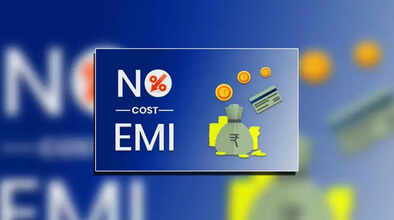No Cost EMI: Know these 5 things before taking No Cost EMI in Sale..

When the sale is about to start on online shopping platforms like Amazon, Flipkart, and other e-commerce sites. Big Billion Days and Great Indian Festival are also starting from 23 September. Even the sale is going to start on Meesho and Myntra. In all these sales, the most tempting offer in front of the customer is - No Cost EMI.
This offer sounds very attractive. After all, who would not like to get a product in installments without paying interest? But the reality is not so simple. Most people click immediately after seeing the offer, but do not understand the rules and charges hidden behind it. For this reason, instead of a benefit, this scheme sometimes becomes a burden on the pocket. If you are also thinking of taking a no-cost EMI in the upcoming sale, then definitely understand these 5 things.
1- What is No Cost EMI actually?
No Cost EMI means that you will not have to pay interest on any product, and you will pay its price in equal installments. Many times, the e-commerce site removes the discount on the product. This means that the price of the product remains the same, but customers feel that they are getting the product interest-free. However, in reality, you are paying as much money as the bank and platform want.
2- The game of hidden charges
Often, banks and e-commerce platforms charge processing fees. Often, people do not pay attention to this. Suppose you bought a mobile worth Rs 20,000. On no-cost EMI, you thought that you would pay without interest. But often, a processing fee of Rs 200-300 is also charged on it, which you do not pay attention to.
3- Card limit gets blocked
Taking a no-cost EMI has a direct impact on your credit card limit. Suppose your card limit is Rs 1 lakh and you took a no-cost EMI of Rs 50,000. This means that now your limit will be reduced to only 50,000. This can spoil your plan to do the rest of your shopping, and you may face problems if you suddenly need money. However, as you pay EMI, that much money will keep getting added to your credit card limit.
4- Problem with cancellation
Many people think that if they do not like the goods, they will return them. But the complexity increases in returning the product purchased on no-cost EMI. Money gets stuck between the bank and the platform. It may take a long time for the refund to come. Many times, the money is returned only after deducting interest or a penalty.
5- Interest and GST are visible in the statement
When you convert a transaction into a no-cost EMI, the interest charged on your transaction is offered by the e-commerce platform as a discount. At the same time, interest is charged on every month's EMI, for which you have already got a discount. However, here you have to pay GST on the interest of the EMI, which becomes your additional expense.
Why can there be a loss?
The biggest disadvantage of the no-cost EMI scheme is that you miss the discount many times. If you had bought the product in cash, you could have gotten a bigger discount, but that discount is removed when taking a no-cost EMI. That is, the customer thinks that he saved the interest, but in reality, the discount is lost.
On the other hand, due to no cost EMI, you feel a very minor burden every month, due to which many times people make a lot of EMIs. In such a situation, when many small EMIs are added together, which together become a big burden in your credit card bill every month, you may have to pay for 6 months to a year.
How to make the right choice?
If you want to take a no-cost EMI, then first keep these things in mind-
See if the discount on the product has not been removed.
Do calculate the processing fee and GST.
Keep an eye on your card limit; do not spend more than 30% of it.
Do read the cancellation policy, so that your money does not get stuck later.
Compare how much the price will be if you make a direct payment.
Conclusion
No-cost EMI is not as beneficial as it sounds. Companies use it as a marketing tool so that the customer decides to make a purchase immediately. In such a situation, you should not click without thinking. It will be better for you to adopt this option only after doing the correct calculation and reading the terms. Otherwise, instead of profit, there will be loss.
Disclaimer: This content has been sourced and edited from Zee Business. While we have made modifications for clarity and presentation, the original content belongs to its respective authors and website. We do not claim ownership of the content.

